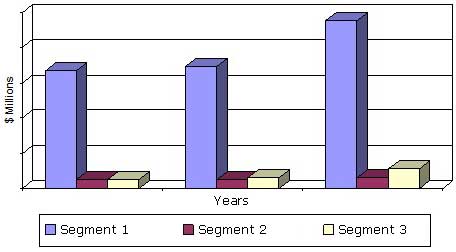Shift in Stroke Burden Towards Younger Generation; Unhealthy Lifestyles is Major Factor
April 17, 2015
Wellesley, Mass., April 17, 2015 –BCC Research (www.bccresearch.com) reveals in its new report on stroke management that while developed markets have modern healthcare facilities, the growing incidences of stroke among people in developing countries has led to greater need and adoption of the latest techniques for stroke diagnostics and management products.
Stroke, also known as brain attack, is a serious acute event caused by sudden impairment in blood supply to the brain, and results in possible damage to brain tissue. A stroke occurs when a blood vessel that supplies nutrients and oxygen to the brain either bursts or is clogged. The most common stroke (more than 85%) is acute ischemic stroke, caused by thrombotic or embolic occlusion of the cerebral artery.
Aging is considered as the greatest risk factor for the development of stroke, and with the global geriatric population anticipated to grow over the next six years, the medical needs of this segment is poised for gain. The rising geriatric population in the Asia-Pacific region is expected to drive market growth during the forecast period. Estimates suggest that more than 20% of the population in Japan is over the age of 65 years.
Healthcare professionals use a variety of imaging techniques to evaluate acute stroke patients. The most widely used is computed tomography or CT scan (sometimes pronounced “CAT” scan), which comprises of a series of cross-sectional images of the head and brain. “CT scans are sensitive for detecting hemorrhage and are therefore useful for differentiating hemorrhagic stroke, caused by bleeding in the brain, from ischemic stroke, caused by a blockage of blood flow to the brain,” says BCC Research analyst Bhavna Joshi. “Carotid endarterectomy is the largest surgery used to treat strokes around the world on account of its high success rate, easy availability and short treatment duration.”
Researchers found that more than 83,000 people aged 20 and younger have suffered strokes every year — about 0.5% of the total. And they warned the shift in stroke burden towards younger people would continue unless urgent steps are taken to encourage people to improve unhealthy lifestyles — mainly by reducing their consumption of salt, alcohol and tobacco. In 2010, 61.5% of disability and 51.7% of deaths were caused by hemorrhagic strokes — which occur when a weakened blood vessel ruptures and is mainly caused by high blood pressure and unhealthy lifestyles. Most affected are people younger than 75 years and those living in low-income and middle-income countries, where the incidence of hemorrhagic stroke has risen by around 19%.
Stroke Diagnostics and Therapeutics: Global Markets discusses the market dynamics and the level of impact, key geographies and respective trends, and competitive scenarios that form the base data for qualitative analysis and market estimates.

Editors and reporters who wish to speak with the analyst should contact Steven Cumming at steven.cumming@bccresearch.com.
Stroke Diagnostics and Therapeutics: Global Markets( HLC180A )
Publish Date: Mar 2015
Data and analysis extracted from this press release must be accompanied by a statement identifying BCC Research LLC as the source and publisher. For media inquiries, email press@bccresearch.com or visit www.bccresearch.com/media to request access to our library of market research.
BCC Library Membership Benefits
Unlimited Access to Market Research Reports for Academic Institutions and Corporations.
Custom Research
Tailored solutions across industries for your unique business needs.
More in Health Maintenance
- Global Patient Monitoring Market to Reach $55.8 Billion by End of 2030
- Global Market for Biological and Medical Imaging Reagents Set to Surge to $40.1 Billion by 2030
- Anesthesia and Respiratory Devices Market to Hit $74.8 Billion by 2030
- Global Healthcare Gets a 6G Boost: Market to Grow at 77.9% CAGR Through 2040
- Global Tissue Engineering and Regeneration Market Set to Surge at 12.8% CAGR Through 2030
Reports from Health Maintenance
Recent News
- Viral Vector Market to Grow 24.6% Annually Through 2030
- Fusion Proteins Market to Hit $64.9 Billion by 2030
- Brain Tumor Therapeutics Market to Grow at 11.1% CAGR Through 2030
- Global Separation Systems Market for Commercial Biotechnology Projected to Reach $45.1 Billion by 2030
- Global Hyaluronic Acid in Healthcare Market to Reach $10.5 Billion by 2030
